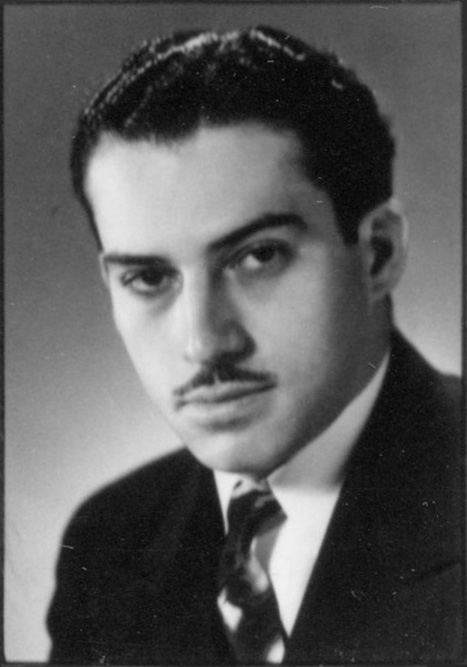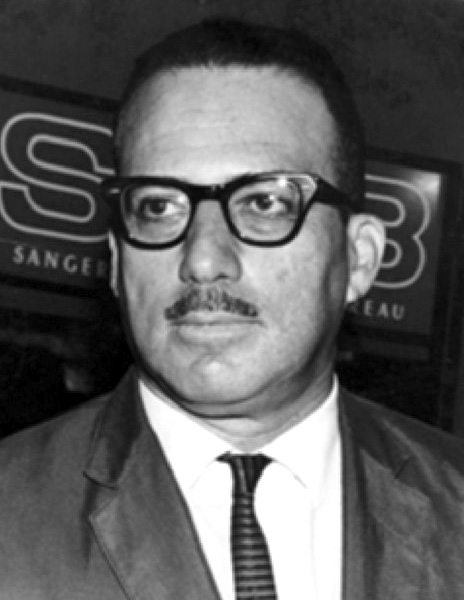Manuel Paniagua, MD, 1914-1983
By Emma Florio, Archives & Research Specialist
Manuel Paniagua was born on October 21, 1914, in San Juan, the capital of Puerto Rico, which had become a United States territory 16 years earlier. After receiving a medical degree in Spain, he came to the United States in 1938 to attend Northwestern University Medical School. While at the school he met and married Evelyn Stevens who was also studying at Northwestern. They would go on to have four children, including a daughter Carmen who became a nurse practitioner.
 |
|
Paniagua’s medical school class of 1941 portrait. From Galter Special Collections.
|
Paniagua earned his MD from NUMS in 1941 and completed a residency in internal medicine at Bayamón District Hospital in Puerto Rico. After serving as a captain in the United States Army Medical Corps during WWII, he studied endocrinology at Philadelphia’s Jefferson Medical College (now Thomas Jefferson University). Upon his return to Puerto Rico in 1948, Paniagua became the island’s first endocrinologist. His first positions included medical director of the Municipal Hospital of Rio Piedras (a district of San Juan) and director of the endocrinology and diabetes section of the San Juan City Hospital.
In the 1950s, Paniagua became involved in contraceptive research in Puerto Rico. A rapidly growing population and lowered death rate in the 1930s and '40s had put a strain on the island’s mostly agrarian economy, leading to high rates of poverty and unemployment. In response, the Puerto Rican government had legalized contraception in 1937 and by the 1950s it was seen as socially acceptable in the staunchly Catholic territory. Organizations like the Family Planning Association (FPA) of Puerto Rico (of which Paniagua would later become the medical director) sought to provide education and medical services related to contraception, fertility, and sterilization, which was pushed by the government as a way to combat the booming birth rate.
With the help of the FPA, American researchers Gregory Pincus and John Rock conducted the first large-scale human trial of the birth control pill in Puerto Rico beginning in 1956. As a prominent endocrinologist on the island, Paniagua assisted in the trials. Researchers framed participation as an opportunity for impoverished women to control their fertility while avoiding sterilization. Participants were given Enovid – a 10 mg combination of estrogen and progesterone, a much larger dose than the average .75 mg that is used today.
In keeping with much of medical research in the early twentieth century, the participants were uninformed about most aspects of the trial, including its experimental nature and the potential health risks. Many dropped out of the trial, some due to side effects like nausea and menstrual irregularities, while others still became pregnant while taking the pill. Even so, researchers considered the trial a success, believing the side effects to be insignificant compared to their discovery of a hormonal oral contraceptive. The Food and Drug Administration approved Enovid to treat gynecological disorders in 1957 and finally as a contraceptive in 1960.
 |
|
Paniagua later in life. From Boletín de la Asociación Médica de Puerto Rico 100, no. 1 (Jan-Mar 2008): 53.
|
Naturally, these trials and the subsequent release of the first birth control pill attracted worldwide attention. By 1962, Paniagua was medical director of the Family Planning Association and was giving interviews in which he assuaged fears about the safety of the pill, explaining that he prescribed it to his own wife and would eventually prescribe it to his daughter. Despite early misgivings, the pill would go on to have a profound impact on women, allowing not just greater control over reproduction but their lives more generally. More recently, the trial has been examined through the lens of bioethics due to issues of informed consent and the exploitation of impoverished women of color, especially in light of the eugenicist history of reproductive regulation of such populations.
After these trials, Paniagua continued his work as an endocrinologist in Puerto Rico, where his research included hypothyroidism and diabetes as well as contraception. He helped test another contraceptive, a spermicidal foam called Emko. This work was the feature of a widely published 1962 newspaper article, which addressed the efforts to lower the birth rate in Puerto Rico and included an interview with Paniagua about the work of the FPA. This work also took him to the United States Congress in 1965 where he spoke at hearings related to population growth in developing countries. He appeared in national newspapers again in 1974 for a more unusual reason: certifying that the American chess grandmaster Robert Byrne was suffering from insomnia, allowing him to postpone a match against Soviet grandmaster Boris Spassky to be held in San Juan.
In 1977 Paniagua co-founded and became the first president of the Sociedad Puertorriqueña de Endocrinología y Diabetología (SPED, Puerto Rican Society of Endocrinology and Diabetology). He retired in 1982 and died on April 8, 1983. As a military veteran, he was buried in Puerto Rico National Cemetery. SPED continues to hold the Manuel Paniagua Post Graduate Diabetes Course in his honor.
Selected References
Cannel, Ward. “Family Planning Assn. Finds Some Rewards In Work: Puerto Rico’s Birth Rate Lower.” Fort Lauderdale News. December 13, 1962.
Vargas, Theresa. “Guinea pigs or pioneers? How Puerto Rican women were used to test the birth control pill.” The Washington Post. May 9, 2017.
Vázquez-Quintana, Enrique. “History of Parathyroid Surgery in Puerto Rico.” Boletín de la Asociación Médica de Puerto Rico 100, no. 1 (Jan-Mar 2008): 50-60.
Updated: October 3, 2024